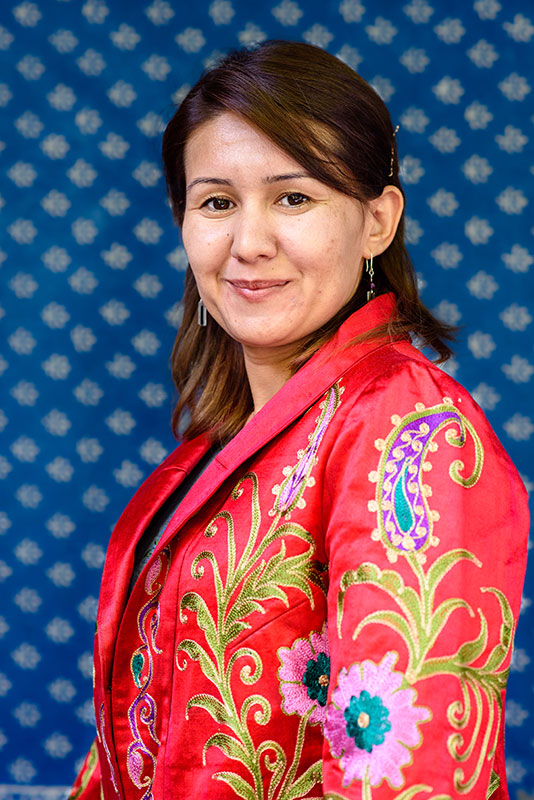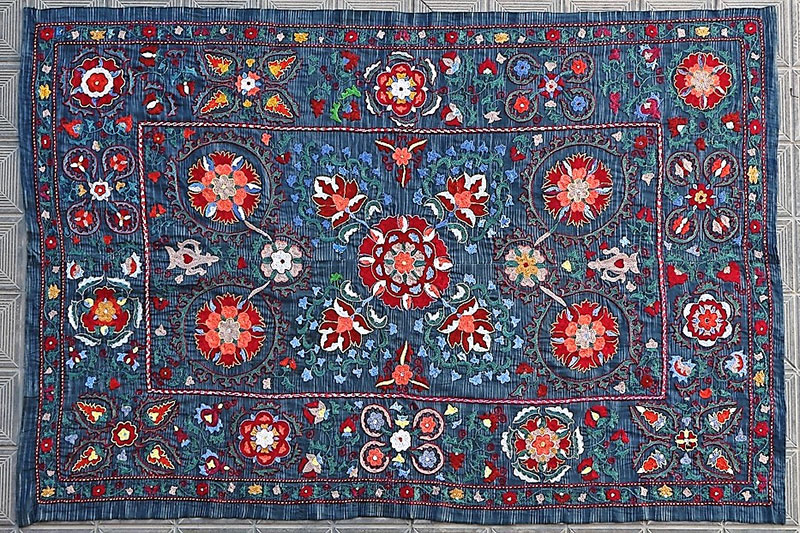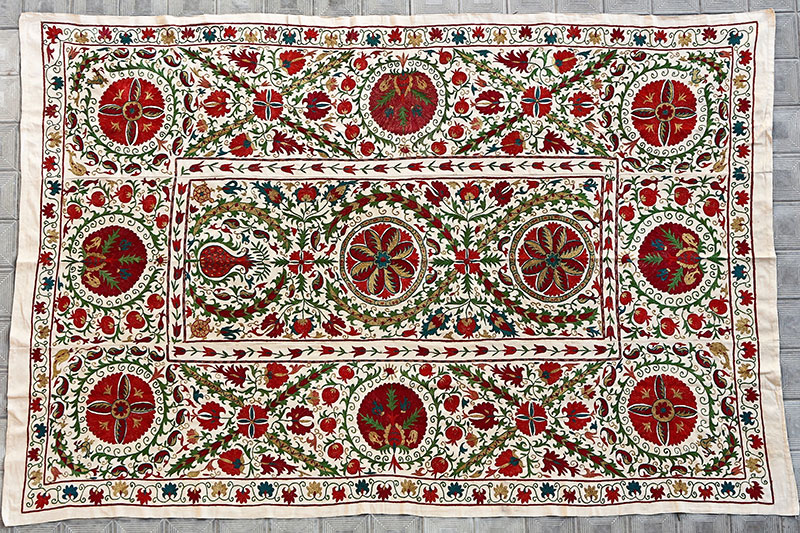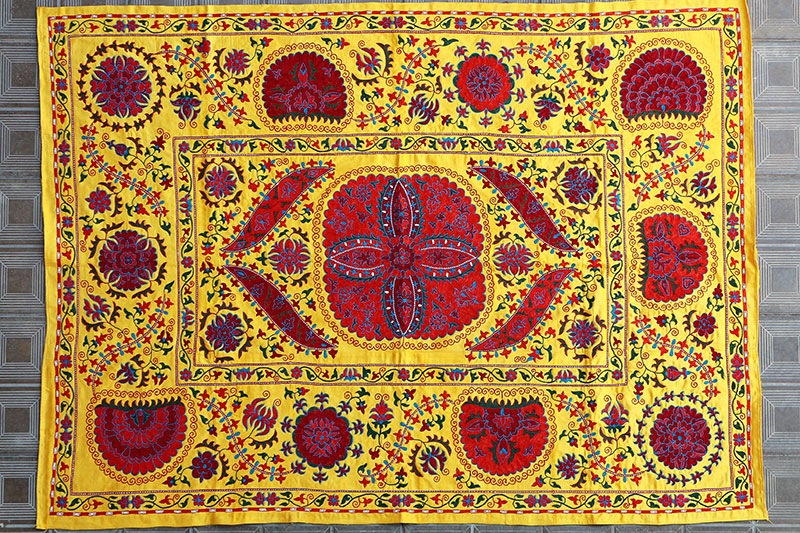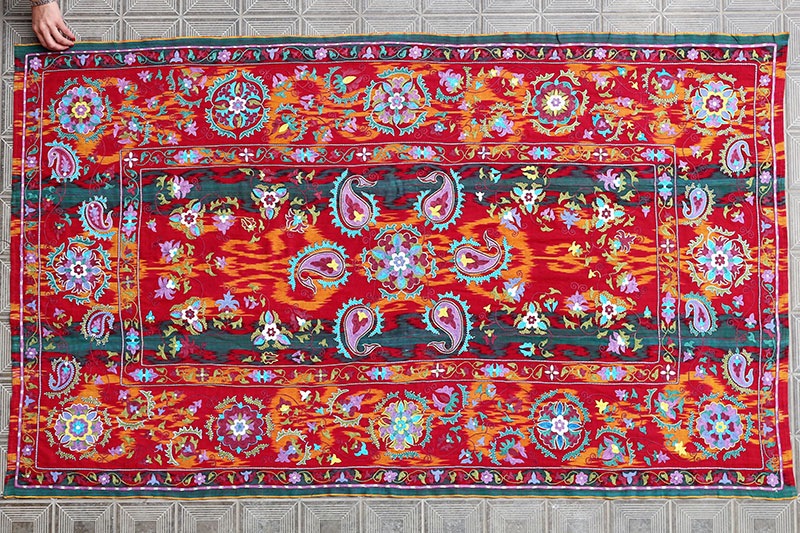Artist:
Zarina Kendjaeva
Region:
Country:
Organization:
Media/General:
Medium of Work:
Year(s) Attended:
About:
Bukhara, Uzbekistan is beloved the world over for its wealth of artforms. It’s here, in this ancient city, that Zarina Kendjaeva’s traditional suzani embroidery both expands upon traditional floral and symbolic designs, and also achieves special distinction for its unusual patterning and coloration. In Uzbekistan and elsewhere in Central Asia, suzani is used for decorative wall hangings, curtains, and bedcovers, as well as small functional household items, such as bags and pillow covers. They are made from finely hand woven cottons or silk material and often the embroidery covers the entire cloth leaving only very small areas not filled with intricate hand work.
Historically, Bukharan suzani feature backgrounds of white, ivory, and yellow cotton or silk. Kendjaeva reaches into the intensely patterned watercolors of the Classical era for inspiration for her kaleidoscopically colorful combinations of embroidery and ikat —which is just one of the reasons why she and her fellow artisans are recognized by UNESCO, and treasured by collectors worldwide. Kendjaeva uses silk threads dyed with madder, indigo, pomegranate and onionskins, and utilizes her encyclopedic knowledge of various stitching techniques: both of these were taught to her by her mother, Firuza, a master of embroidery.
Employing a mesmerizing combination of motifs—from abstracted geometrics to delicately intertwined florals—Kendjaeva merges generations-old sensibilities with entirely new ones. To achieve this, Kendjaeva first draws designs freehand with a ball-point pen directly onto her chosen fabric. Then the required amount of silk thread is treated and dyed naturally by her and her apprentices. Next comes the embroidery process, which entails many hours of laborious work and results in the distinctively romantic, mysterious forms that make Uzbek suzani textiles so beloved and recognizable.

